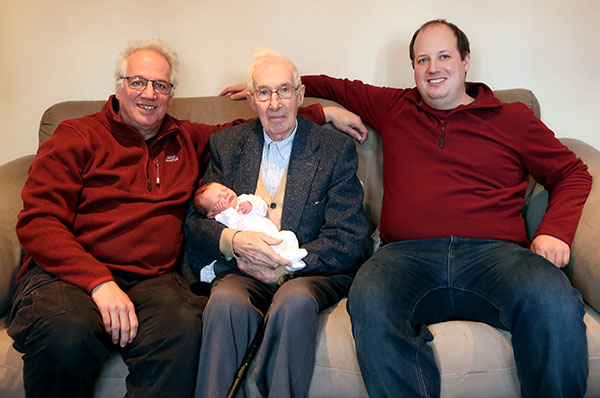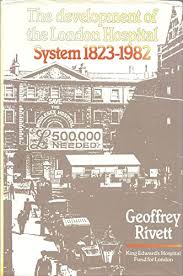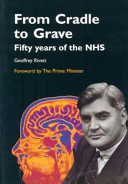
Dr. Geoffrey Rivett 1932-2024
I'm sad to announce the death of my father, Dr Geoffrey Rivett.
Geoffrey sadly died on 25th July 2024. He was at home, with family, at peace and
without pain.

Geoffrey with his son Barry, grandson Tom and great grandson Hugh - Feb 2024
Geoffrey worked in many roles in the health service throughout his lifetime; as
a student as a theatre orderly, as a general practitioner, and in the Department
of Health on policy in IT, primary health care, and hospital and medical school
mergers and rationalisation. In retirement, he was for six years lead
governor of a Foundation Trust, and later a member of Healthwatch.
His long-standing interest in ‘where have we come from, and how did we get here?’ led him to explore the past and write books on The Development of the London Hospital System since 1823 and subsequently on the history of the NHS since 1948, organisationally, clinically and professionally. Both were published initially by The King’s Fund and subsequently transferred by him to the Internet, as a widely used free resource. The Nuffield Trust is now the online home of NHShistory.net and the resource is now maintained and updated by the Trust.
Geoffrey lived in the City of London and regularly contributed to seminars, radio and TV programmes on health service development.
 |
For more information and to
read Geoffrey's London Hospital System book online :
London
Hospital System Website Copies can be bought as hard copy or downloadable PDF from Blurb |
 |
For more information and to read Geoffrey's NHS book online : The new home of nhshistory.net at the Nuffield Trust Copies can be bought as hard copy or downloadable PDF from : Blurb - Book 1 and Blurb - Book 2 |